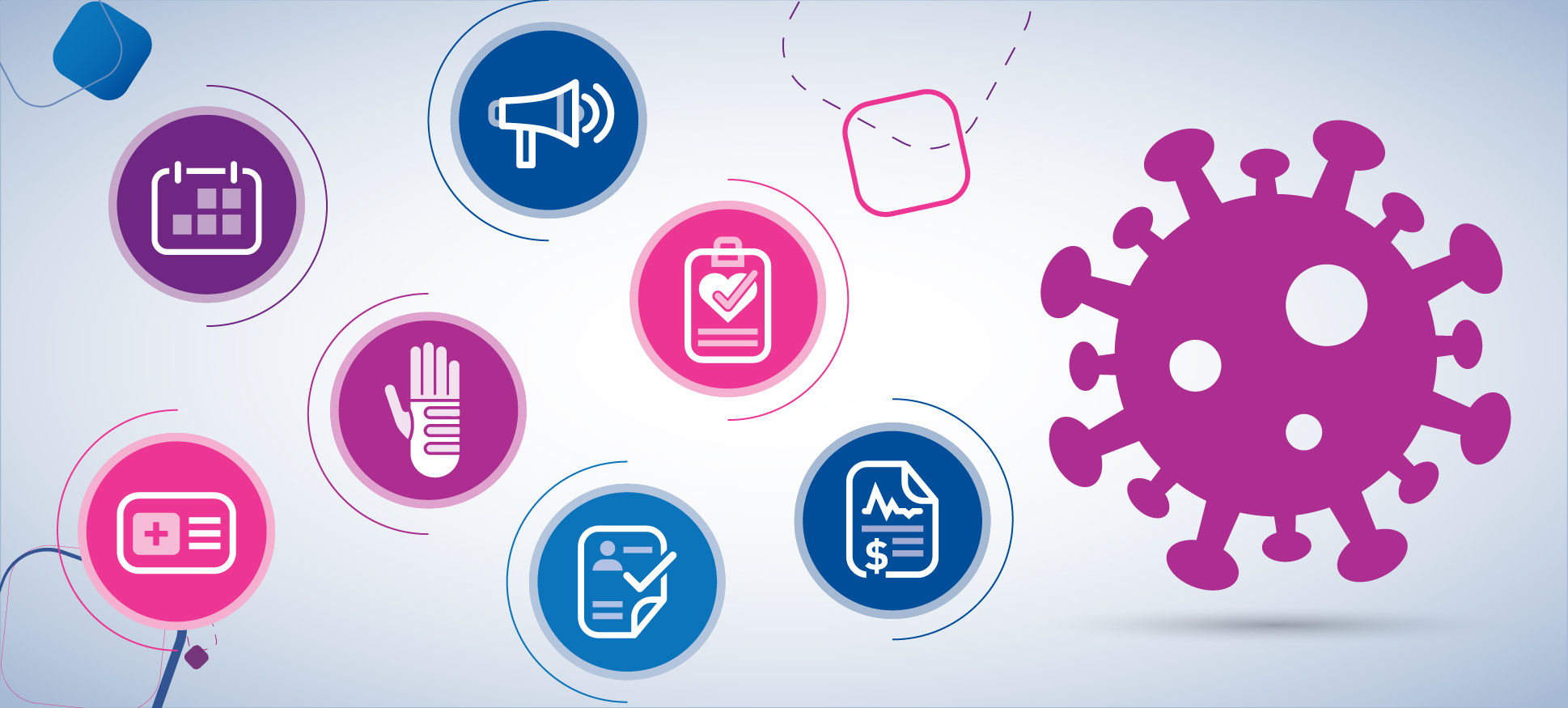Testing the cloud migration

As payers and providers count down the days until the implementation of the No Surprises Act in January 2022, healthcare price transparency and billing remain trending topics in the healthcare world. The Act is the latest in a series of federal and state commitments to help healthcare consumers feel more prepared and informed about their medical costs. Consumers have come to expect a payment experience that matches the way they shop around for other household budget-eaters, such as cars and laptops. But healthcare isn’t like other purchases – it’s complex, high stakes, and often incredibly opaque. Lists of shoppable services are often difficult to navigate, information on quality can be hard to come by, and the reality is that patients don’t always have the power to choose how they access care. The CMS final rule on price transparency and the new regulations for balance billing signal a high-level desire to improve the healthcare experience with patient-friendly pricing. It seems to be working. Experian Health’s State of Patient Access 2.0 survey, fielded in June 2021, reveals that price transparency remains important to both patients and providers. It’s also improved substantially in the six months since the first survey. Back in November 2020, more than half of survey participants had final costs that differed significantly from their billing estimates. By June, this figure had dropped to just 14%, which means more patients are able to plan for their final bill with confidence. Given these improvements, what’s on the horizon for price transparency? In the latest of our expert interview series, Greg Young, Senior Director of Marketing, talked to Dan Wiens, Product Director for Patient Estimates at Experian Health, about the future of patient estimates and price transparency. Watch the interview below: What’s driving the change in patient perception when it comes to healthcare price transparency? According to Wiens, two major factors are improving patient attitudes to pricing estimates: “At the height of the pandemic, hospitals were seeing fewer patients and many elective procedures were canceled, so there weren’t a lot of estimates going out. Secondly, there has been a massive push for price transparency from governments and providers. In January 2021, federal regulations came out specifically to give patients a better view of their out-of-pocket expenses. Many more facilities are launching price transparency tools, as opposed to using databases that guess what a patient’s obligation will be.” As those regulatory requirements come into force, fewer patients are surprised by their final bill. By providing accurate estimates ahead of time, supporting patients to manage their financial journey, and providing personalized patient statements, hospitals are pushing forward with transparent pricing strategies that help patients feel in control of their medical bills. Is the problem of price transparency solved if patients, providers and politicians are in favor of these new regulations? Providers recognize the benefits of transparent pricing: 9 out of 10 providers told us they agree that providing accurate estimates helps patients to pay their bills. With everyone seemingly supportive of this approach, some might see the challenge as resolved. The problem then becomes a question of implementation. Wiens says the job isn’t quite finished yet: “Healthcare price transparency will continue to evolve and grow. Now that patients can see their out-of-pocket expenses for very specific procedures, they’ll want it for the rest. Hospitals are very quickly learning that when a patient knows what they owe, they can accommodate larger expenses and take care of smaller bills immediately. And the government is clear that they don’t want patients to be in the dark about what they owe, so we’ll see more and more transparency requirements.” Hospitals looking to step up their pricing estimates now have a variety of tools at their disposal. Offering patients personalized information in a convenient and easy-to-understand format should be top of the list. Patient Payment Estimates help patients understand their financial responsibility before even coming in for care. Patients get a cost breakdown straight to their mobile device and can immediately pay then and there if they want. This can also be integrated with Patient Financial Advisor, which provides real-time benefits information, and directs patients to appropriate payment plans and charity options. It makes the process less stressful and reduces the risk of uncompensated care for providers. Is there more healthcare price transparency regulation on the horizon? Regulations will continue to be a major driver of evolving healthcare pricing policy in the next few years. In addition to the federal government’s price transparency mandate in 2021 and the No Surprises Act, which takes effect in January of 2022, at least 22 states have followed suit in implementing price transparency and balance billing requirements. Wiens says, “price transparency and balance billing regulations will continue to evolve. A lot of hospitals want to make changes on their own, but some will need a little bit of extra motivation, which will come from regulations.” As focus shifts into more complex areas of healthcare finance, regulatory requirements will continue to ramp up. While the price transparency rule focused simply on helping patients understand their out-of-pocket expenses, the No Surprises Act is much more comprehensive and complex. This new regulation covers patient benefits, insurance claim processes, and determines whether patients are in or out of network. Further regulations are likely to dig deeper, to make sure patients understand what they’re paying. Providers that embrace a transparent approach to patient payments will be ahead of the game when those changes come into play. Download the State of Patient Access Survey 2.0, to find out more about the future of patient-friendly pricing.

COVID-19 transformed the patient journey, and it's clear when we evaluate every step. Data and technology gave patients the convenience, flexibility, and control to get care on their terms, and these changes will be here to stay. From marketing to scheduling to payments and more – providers and payers have ample opportunities to respond to these changes and will need to adapt their future strategies accordingly. Self-scheduling, mobile registrations, and automated authorizations are a few examples of tools and technologies that are more than likely to remain prominent in healthcare. What other changes are here to stay? In this new infographic, we take a dive into each of the 7 steps to see how data and technology has impacted the patient journey, and provide strategic recommendations on how providers and payers can adjust post-pandemic: The use of data and digital tools opened up new doors for greater patient access, engagement, transparency, and control. The post-COVID-19 patient journey is going to continue to evolve – payers and providers will need to adapt to keep up with the changes, to ensure that patients experience the best outcomes. To get a deep dive into all of the changes to the patient journey, download our white paper.

Rising medical debt, now a staggering $140 billion, is the largest source of debt for American families. A large portion of this is a direct result of surprise billing, with a third of insured adults saying they’ve received an unexpected bill in the previous two years. What’s no surprise, then, is that two-thirds of US adults worry about being able to afford these unanticipated medical bills. It’s a problem that concerns so many patients that it now has the attention and action of both state and federal governments. To help solve this problem, Congress signed the No Surprises Act into law. Experian Health can help your healthcare organization navigate the regulatory landscape and implement solutions ranging from transparent, patient-friendly estimates to our all-new FREE No Surprises Act (NSA) Payer Alerts Portal. The No Surprises Act, effective January 1st, 2022, aims to protect consumers from at least one contributor to the problem: unexpected bills for out-of-network care in emergency and non-emergency settings. Around a fifth of emergency claims and a sixth of in-network hospital stays include an out-of-network bill, often due to emergency or ancillary care. Since patients lack meaningful choices when it comes to choosing these unexpected services, they have no option but to pay up or face negative marks on their credit reports. Typically, while health plans cover some of the bills, patients will still be responsible for the remaining balances. Webinar Series: Unpacking The No Surprises Act and Q&A with an expert Industry expert Stanley Nachimson, Health IT Implementation Expert, recently hosted a series of webinars to help providers get up to speed on what they need to do to comply with the No Surprises Act. Learn about the Good Faith Estimate, how NSA will apply in different care settings, and more. By enforcing better price transparency and consumer protection, the new regulations will help to create better patient experiences and ensure that fewer bills are written off to bad debt. However, according to a recent survey conducted by Experian Health, only 72% of providers are familiar with the No Surprises Act. That’s not all – only 40% of respondents are moderately confident their organization will be able to solve for the No Surprises Act. Payers and providers must act now to ensure their processes are ready to comply with the changes. Experian Health is now offering a FREE comprehensive, updated list of No Surprises Act (NSA) payer policy alerts for United States hospitals, medical groups, and specialty healthcare service organizations. Tackling the price transparency problem with the No Surprises Act Healthcare pricing has been under the spotlight for a while, with several new regulatory measures introduced over the last few years. The new Act, which was signed into law under the Consolidated Appropriations Act of 2021, builds on previous federal actions to empower patients by giving them greater access to healthcare cost information. Come January 2022, balance billing will no longer be permitted for out-of-network emergency services, out-of-network air ambulance services, and out-of-network non-emergency services provided at in-network facilities. Insurers must cover emergency services without any prior authorization, regardless of whether the provider is within the health plan’s network, and patients should expect to pay the same as in-network services. The Act requires both providers and health plans to help patients access healthcare pricing information, and providers must provide consumers with tools to get better price estimates, including a “Good Faith Estimate” covering all relevant codes and charges. The Act sets out a process for health plans to reimburse providers and an arbitration path in the event of disagreement. Summary of provisions in the No Surprises Act: Protects patients from receiving surprise medical bills resulting from gaps in coverage for emergency services and certain services provided by out-of-network facilities Holds patients liable only for their in-network cost-sharing amounts, and requires that the patient’s share cannot exceed in-network rates without patient consent Provides guidance for how providers and insurers can negotiate fair reimbursement for out-of-network services Includes the requirements that providers submit Good Faith Estimates to payers and that payers utilize those estimates to create and provide Advance Explanation of Benefits to members. However, enforcement of this requirement has been delayed until more guidance can be provided related to standards for the transmission of these files (as of October 2021) What do providers need to do now to prepare? Creating a “no surprises” billing experience will require payers and providers to make major process changes. Roger Johnson, VP of Payer Solutions at Experian Health, says, “The new regulations require the industry to innovate significantly in a very short timeframe. Determining network status is a huge challenge for providers, as is engaging patients electronically pre-service. There will also be challenges in tracking and submitting consent forms, producing Good Faith Estimates, applying appropriate cost-sharing, billing, payment reconciliation, and the new dispute resolution process.” See what Roger had to say in our Interview with the Expert: CMS has provided a list of documents and requirements for patient notices. These include: A statement that the provider or facility is OON (if that is the case) An itemized, good faith estimate of the cost of care Information on prior authorization and utilization management limitations The notice must be in a format the patient can understand and is accessible (i.e., preferred language and apart from other documents). A variety of model forms and notices are available on the CMS “Overview of Rules and Fact Sheets” page: Standard notice & consent forms for nonparticipating providers & emergency facilities regarding consumer consent on balance billing protections: Download the Surprise Billing Protection Form Model disclosure notice on patient protections against surprise billing for providers, facilities, health plans and insurers: Download Patient Rights & Protections Against Surprise Medical Bills Paperwork Reduction Act (PRA) model notices and information collection requirements for the Federal Independent Dispute Resolution Process: Download Model Notices and Information Requirements Paperwork Reduction Act (PRA) model notices and information collection requirements for the good-faith estimate and patient-provider payment dispute resolution Download Model Notices and Information Requirements Additionally, The Department of Labor published a Model Notice link on its No Surprises Act overview page. Experian Health is engaging with industry partners to clarify the regulations and collaborate with clients to adapt workflows for a smooth transition. Find out more in our on-demand webinar. What price transparency tools are available for healthcare organizations? In the meantime, various price transparency tools exist to help providers meet ongoing regulatory requirements and create a better patient experience with easy-to-understand cost breakdowns. For example: Patient Payment Estimates give patients clear and accurate estimates of authorized services before, or at, the point-of-service, so they feel more in control of their financial obligations. With a user-friendly interface, the tool helps patients plan and pay their bills – while directing them to appropriate financial assistance options. And because it’s automated, hospital staff will no longer need to manually update price lists. For providers, this tool can create an on-demand Good Faith Estimate using out-of-network benefits. Patient Financial Advisor is a text-to-mobile service that lets patients see their estimated costs of care before they come to the hospital. This solution provides a full breakdown of the procedures, as well as a total estimated amount based on in-network benefits. Registration Accelerator has the ability to collect provider forms and return them back to the client’s document imaging system. ClaimSource can identify claims that are at risk, prior to being submitted to payers. Claim Scrubber can identify claims at risk from various angles, such as: Non-Network payers Non-participating providers Services provided without an approved authorization Services provided outside of the approved authorization criteria While regulatory change can seem daunting, price transparency is already trending in the right direction. Our second State of Patient Access survey indicated that both patients and providers want more price transparency. Nine out of ten providers told us they agree that price transparency improves the customer experience and increases the likelihood that patient bills are paid. The regulations may be a catalyst for change, but making it easier for patients to understand and pay their bills continues to pick up momentum. That’s good news for patients’ wallets and for providers’ bottom lines. Download our on-demand webinar, "Unpacking the No Surprises Act," to learn more about how the new regulation will impact patient and provider workflows.
Pull Quote one
Lorem Ipsum available, but the majority have suffered alteration in some form, by injected humouThere are many variations of passages of Lorem Ipsum available, but the majority have suffered alteration in some form, by injected humouThere are many variations of passages of Lorem Ipsum available, but the majority have suffered alteration in some form, by injected humouThere are many variations of passages of Lorem Ipsum available, but the majority have suffered alteration in some form, by injected humou
Pullquote two
There are many variations of passages of Lorem Ipsum available, but the majority have suffered alteration in some form, by injected humou
| Name | Details |
| Patient Summary | Keep the records of the patients to know their health details |

This is a component in AEM which is tested sprint 102 and released to Production.
There are many variations of passages of Lorem Ipsum available, but the majority have suffered alteration in some form, by injected humouThere are many variations of passages of Lorem Ipsum available, but the majority have suffered alteration in some form, by injected humouThere are many variations of passages of Lorem Ipsum available, but the majority have suffered alteration in some form, by injected humouThere are many variations of passages of Lorem Ipsum available, but the majority have suffered alteration in some form, by injected humouThere are many variations of passages of Lorem Ipsum available, but the majority have suffered alteration in some form, by injected humouThere are many variations of passages of Lorem Ipsum available, but the majority have suffered alteration in some form, by injected humouThere are many variations of passages of Lorem Ipsum available, but the majority have suffered alteration in some form, by injected humouThere are many variations of passages of Lorem Ipsum available, but the majority have suffered alteration in some form, by injected humouThere are many variations of passages of Lorem Ipsum available, but the majority have suffered alteration in some form, by injected humouThere are many variations of passages of Lorem Ipsum available, but the majority have suffered alteration in some form, by injected humouThere are many variations of passages of Lorem Ipsum available, but the majority have suffered alteration in some form, by injected humouThere are many variations of passages of Lorem Ipsum available, but the majority have suffered alteration in some form, by injected humouThere are many variations of passages of Lorem Ipsum available, but the majority have suffered alteration in some form, by injected humou
